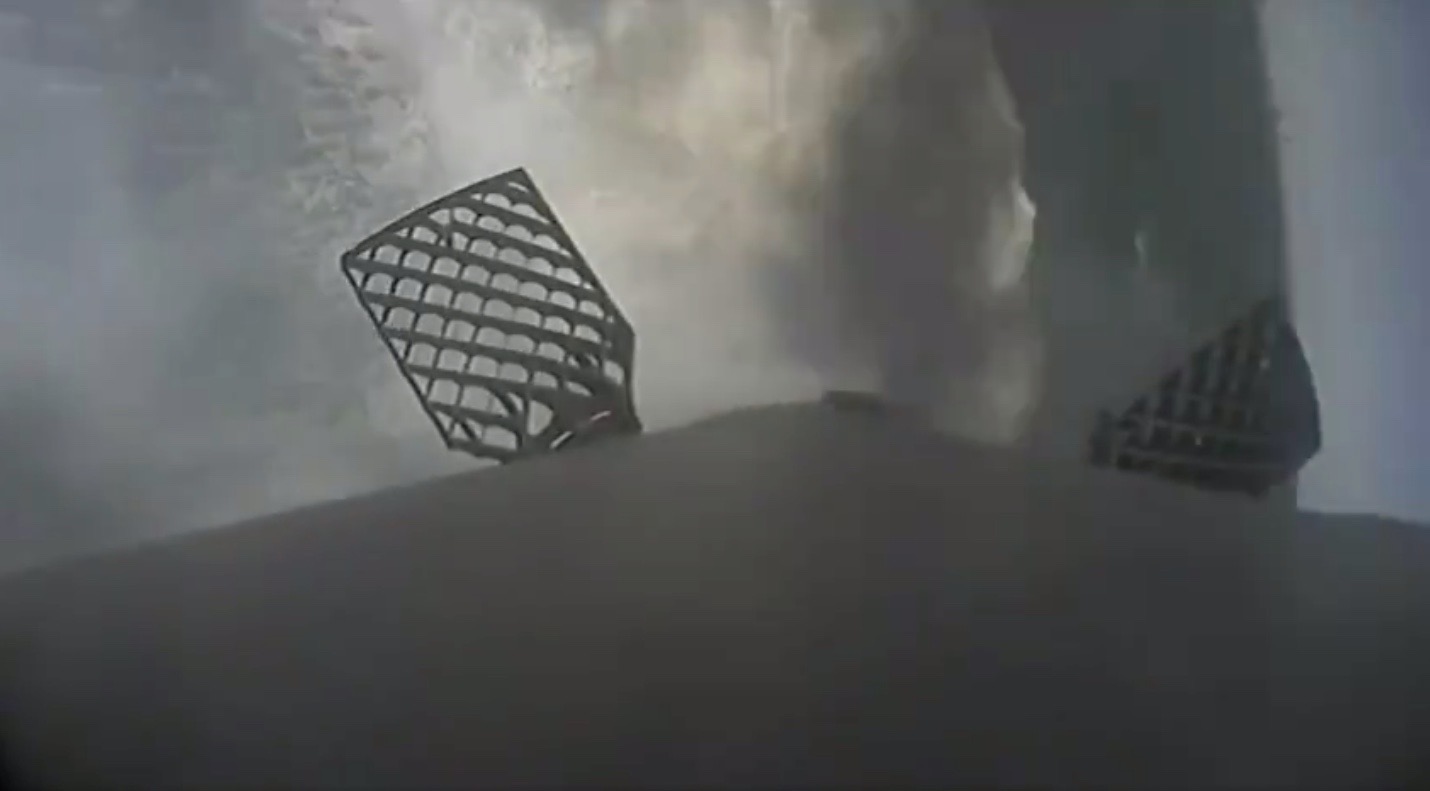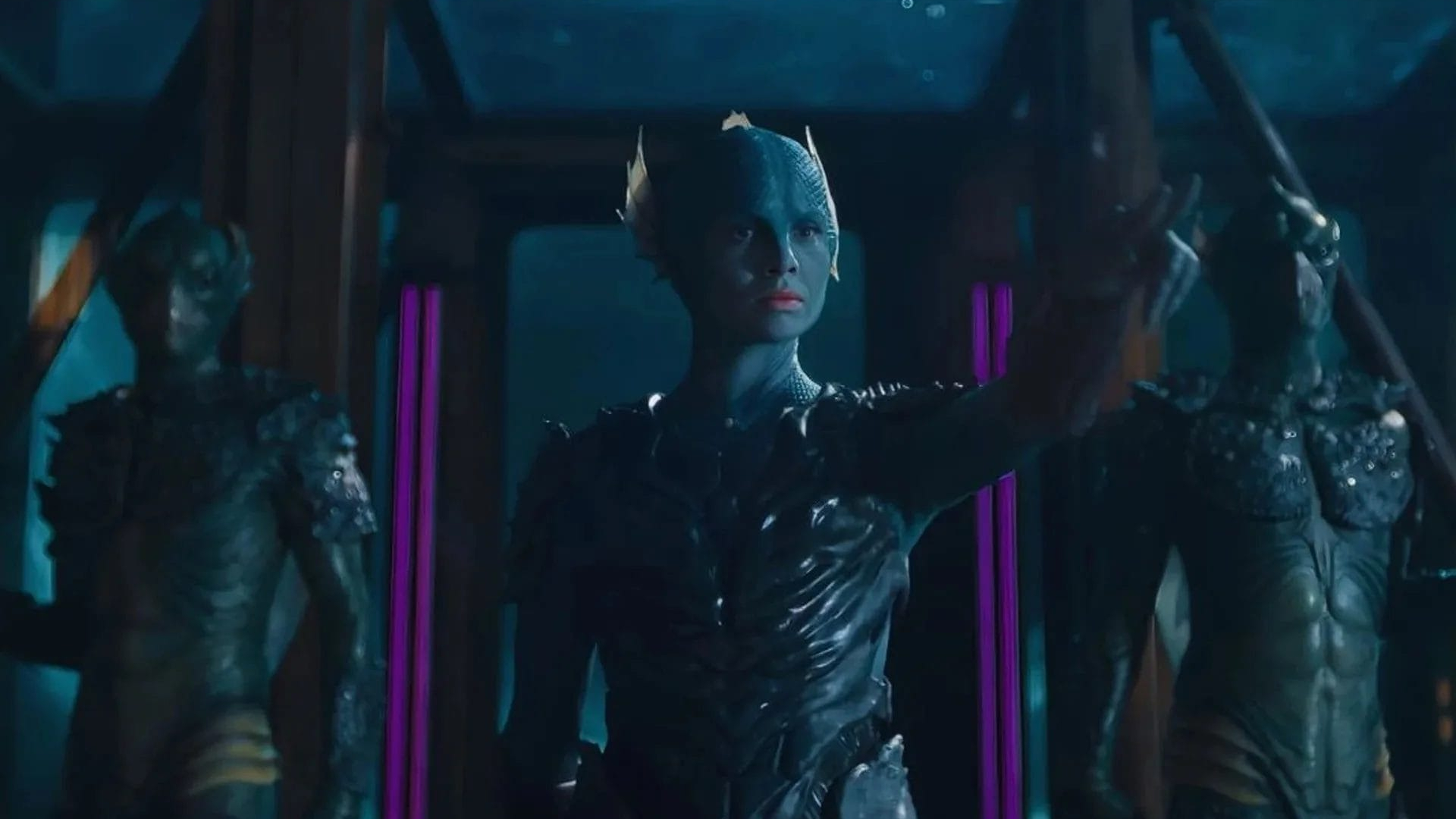Watch This SpaceX Rocket Splash Down During Failed Landing Attempt (Videos)
A new video gives an amazing rocket's-eye view of a SpaceX booster's unsuccessful bid to return to terra firma today (Dec. 5).
A two-stage SpaceX Falcon 9 rocket launched a robotic Dragon cargo capsule toward the International Space Station for NASA today, lifting off from Florida's Cape Canaveral Air Force Station. Dragon got up and out as planned, fulfilling the day's primary mission objective.
The first stage, meanwhile, tried to come back for a vertical landing at Cape Canaveral. Falcon 9 first stages have pulled off more than 30 such touchdowns to date, some on land and some at sea on one of SpaceX's two "droneships." Recovered boosters are inspected, refurbished and flown again — part of the company's plan to slash the cost of spaceflight via rapid and repeated reuse. [In Photos: SpaceX's Double Rocket Launches and Landings in Pictures]
But the first stage didn't make it today, as the video shows. The booster began rolling rapidly as it descended through the lower atmosphere — not a good sign, obviously. SpaceX's webcast cut away from the first-stage feed shortly thereafter, preventing viewers from seeing the impending splashdown just off the Florida coast.
SpaceX already knows what went wrong with the landing attempt, according to company founder and CEO Elon Musk.
"Grid fin hydraulic pump stalled, so Falcon landed just out to sea. Appears to be undamaged & is transmitting data. Recovery ship dispatched," Musk said via Twitter today.
Hypersonic grid fins help the booster steer its way back for a precision touchdown. Each Falcon 9 first stage sports four of these waffle-iron-looking things, which are installed close to the top of the booster.
Breaking space news, the latest updates on rocket launches, skywatching events and more!
Falcon 9 first stages don't have backup systems to bail out malfunctioning grid-fin pumps, though that will probably change in the future, Musk said in another tweet.
"Pump is single string. Some landing systems are not redundant, as landing is considered ground safety critical, but not mission critical. Given this event, we will likely add a backup pump & lines," he tweeted.
Musk also addressed the video dropout in another tweet, calling the webcast cutaway a mistake. "We will show all footage, good or bad," he added.
The billionaire entrepreneur soon made good on that promise, posting the booster's first-person splashdown video on Twitter. This footage, and another video Musk tweeted later this afternoon — this one taken from afar by a tracking camera — show that the first stage actually stabilized itself at the very end, hitting the water with a nice, vertical posture (but then quickly toppling onto its side with a big splash).
It's unclear exactly how the first stage stopped its roll, Hans Koenigsmann, SpaceX vice president of build and flight reliability, said during a postlaunch news conference today. The change may simply have resulted from landing-leg deployment, he said. (Think of how figure skaters speed up and slow down their spin by tucking and extending their arms, respectively.)
Koenigsmann also stressed that the public was never in danger during today's landing attempt. Falcon 9 first stages are outfitted with targeting algorithms that keep them offshore until the very end of their touchdown sequences, when it's clear that everything is working well, he said. The boosters also "know" to avoid buildings even if they do somehow stray onto a non-targeted patch of land.
In addition, Koenigsmann said, Falcon 9 first and second stages both feature autonomous "flight termination systems," which would step in if the above safeguards somehow fell short.
"So, public safety was well-protected here," Koenigsmann said. "And, as much as we are disappointed in this missed landing — or landing in the water, rather, instead of land — it shows the system overall knows how to recover from certain malfunctions."
Today's failed landing shouldn't affect upcoming SpaceX launches, Koenigsmann added.
As Musk noted, SpaceX plans to recover the booster. The company will study the first stage and its data in depth to make sure the cause of today's landing anomaly is understood. Koenigsmann said that it's too early to know if the first stage can fly again. Musk was a bit more bullish, saying via Twitter, "We may use it for an internal SpaceX mission."
Today's incident was the first such miss by a returning SpaceX booster since February, when the core of a Falcon Heavy just missed its attempted droneship touchdown during the giant rocket's maiden flight. The other two boosters did ace their landings that day, however. (The Falcon Heavy basically consists of two Falcon 9 first stages strapped to a central core, which is itself a modified Falcon 9 first stage.)
If all goes according to plan, Dragon will arrive at the space station on Saturday morning (Dec. 8), delivering about 5,600 lbs. (2,540 kilograms) of food, supplies and scientific gear to the orbiting lab. The capsule will return to Earth on Jan. 13.
Editor's note: A previous version of this story incorrectly stated that grid fins are installed near the base of Falcon 9 first stages. They're actually located near the top of the boosters.
Mike Wall's book about the search for alien life, "Out There" (Grand Central Publishing, 2018; illustrated by Karl Tate) is out now. Follow him on Twitter @michaeldwall. Follow us @Spacedotcom or Facebook. Originally published on Space.com.

Michael Wall is a Senior Space Writer with Space.com and joined the team in 2010. He primarily covers exoplanets, spaceflight and military space, but has been known to dabble in the space art beat. His book about the search for alien life, "Out There," was published on Nov. 13, 2018. Before becoming a science writer, Michael worked as a herpetologist and wildlife biologist. He has a Ph.D. in evolutionary biology from the University of Sydney, Australia, a bachelor's degree from the University of Arizona, and a graduate certificate in science writing from the University of California, Santa Cruz. To find out what his latest project is, you can follow Michael on Twitter.

